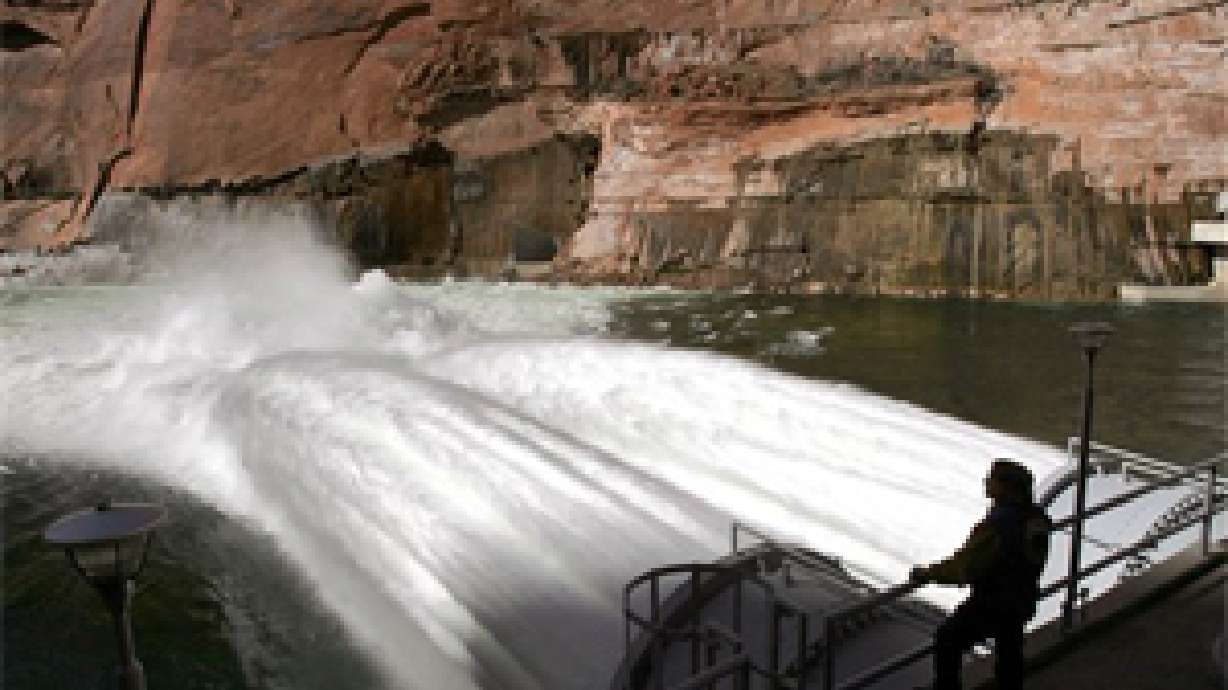Estimated read time: 3-4 minutes
This archived news story is available only for your personal, non-commercial use. Information in the story may be outdated or superseded by additional information. Reading or replaying the story in its archived form does not constitute a republication of the story.
FLAGSTAFF, Ariz. (AP) -- Interior Secretary Ken Salazar is calling for more manmade floods to be released from the Glen Canyon Dam into the Colorado River in an effort to protect wildlife and archaeological sites.
The flooding builds up sandbars and beaches along a 277-mile stretch of the river as it runs through the Grand Canyon. Salazar announced this week that his department would head up an effort to determine when and how high flow experiments should be conducted.
"We must find a way to protect one of the world's most treasured landscapes -- the Grand Canyon -- while meeting water and clean energy needs in the face of climate change," Salazar said in a video message to the Colorado River Water Users Association in Las Vegas this week.
The operation of the dam built more than 40 years ago has been controversial.
Since 1963, the Glen Canyon Dam has blocked 90 percent of the sediment that provides habitat for plants and animals, beaches for campers and river runners and helped protect archaeological sites from erosion from the downstream Colorado. Several endangered species of fish have declined in numbers.
Environmentalists have decried the high flow experiments as meaningless without a plan for more steady flows and say the flooding better serves the interests of hydropower than natural resources.
The last high flow experiment in 2008 sent torrents of water from the dam on the Arizona-Utah line for 60 hours to mimic natural flooding. The results were short-lived, though, and newly built up sandbars eroded within months.
Compounding the erosion is the practice of sending more water through the dam in the daytime to maximize power generation, then trimming output at night.
The sediment provides a habitat for plants and animals, builds beaches for campers and river runners and helps protect archaeological sites from erosion and weathering.
John Weisheit, conservation director for the Moab, Utah-based conservation group Living Rivers, said the plan won't work. Aside from getting rid of the dam, the next best thing would be to adjust the flows from the dam to restore the once muddy and warm river that was an ideal habitat, he said.
Salazar must determine if the Grand Canyon or "a few kilowatt hours" is more important, Weisheit said.
The plan for high flows would be developed partly on reports from the U.S. Geological Survey on the effects of the 2008 flood due out next month.
Salazar said high flows could be triggered partly by the sediment deposited when tributaries of the Colorado River downstream from the dam flood. That happens on average every one to two years, said John Hammill, chief of the USGS's Grand Canyon Monitoring and Research Center.
At that rate, it could take more than 30 years to build up sediment to levels existing before the dam was constructed, Hammill said. Keeping flows as low as possible after a manmade flood would help conserve the sandbars, but that flow regime would cut the amount of hydropower produced from the dam, he said.
"Finding that balance has always been a difficult task," he said.
(Copyright 2009 by The Associated Press. All Rights Reserved.)









